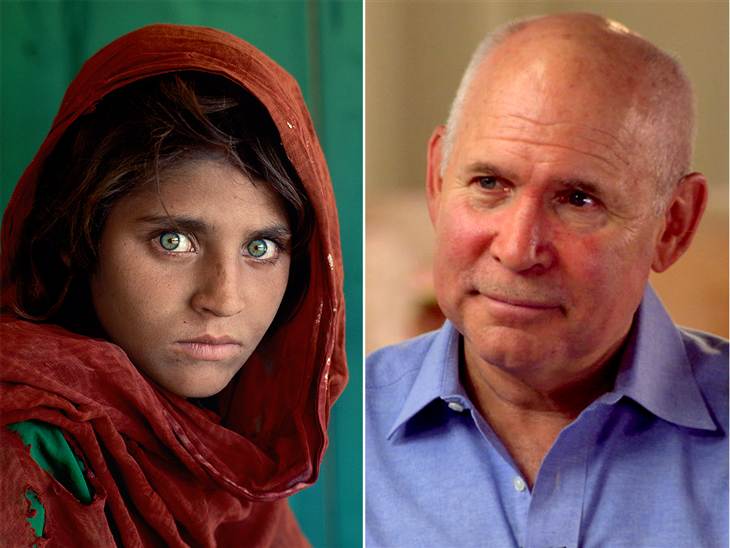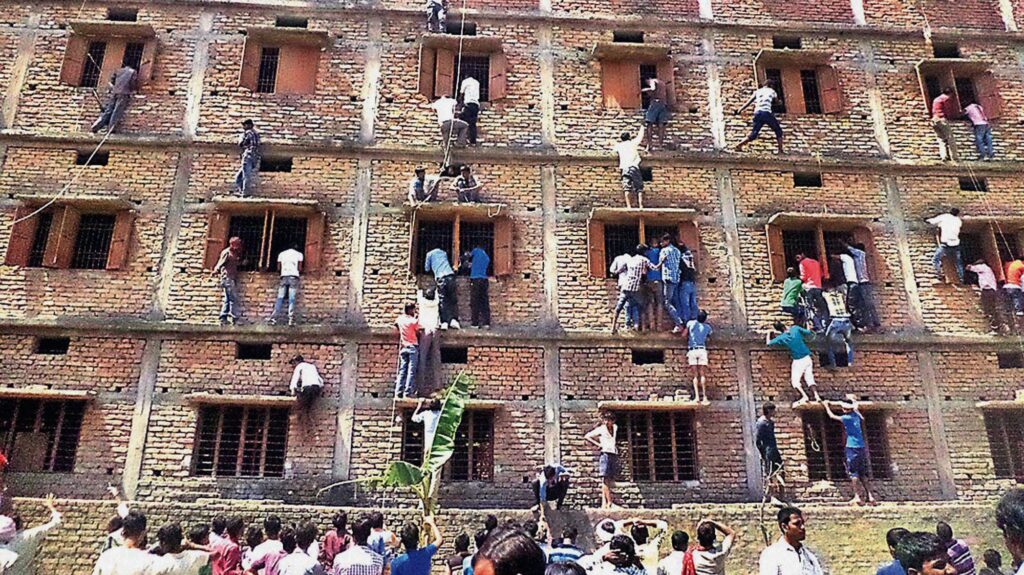The story behind the world’s most famous photograph
Three decades ago, Steve McCurry took arguably the most iconic picture of all time.
Yet even after all this time, the photographer brims with enthusiasm when he talks about “Afghan Girl.”
“I knew she had an incredible look, a penetrating gaze,” he recalls.
“But there was a crowd of people around us, the dust was swirling around, and it was before digital cameras and you never knew what would happen with the film.
“When I developed the picture, I knew it was special. I showed it to the editor of the National Geographic, and he leaped to his feet and shouted, ‘that’s our next cover‘.”
Not only did “Afghan Girl” become the magazine’s next cover, but the most successful in its distinguished history.
.jpg)
The striking portrait of 12-year-old Sharbat Gula, a Pashtun orphan in the Nasir Bagh refugee camp on the Afghan-Pakistan border, was taken in December 1984 and published the following year.
The woman, now in her forties, has recently been found to be living in Pakistan.
When McCurry reflects upon its popularity, what excites him most is the impact that this single image has had on the real world.
“People volunteered to work in the refugee camps because of that photograph,” he says. “Afghans are incredibly proud of it, as the girl is poor but shows great pride, fortitude and self-respect.
“It drew attention to their plight, and inspired a lot of people.”
It also led the National Geographic to set up the Afghan Children’s Fund – and meant that to this day, McCurry is never charged a fare by appreciative Afghan taxi drivers.
The portrait forms the centerpiece of a major retrospective exhibition of McCurry’s work, which opened recently in Monza, Italy.
“It’s great to look back on my work and see how themes and connections have emerged. But I am never even remotely thinking of retiring,” the 64-year-old tells CNN from his studio in New York.
“There are so many new places and stories that fascinate me. I have a long list of places to visit: Iran, Madagascar, Mongolia, Russia.
“I believe that when you find something you love, you should do it your whole life. Why would you retire from doing what you love? It’s just not what we do.”
The famous photograph is just one of thousands of extraordinary pictures that McCurry has taken over a 40-year career, during which he has won dozens of awards.
One which is displayed prominently in his retrospective exhibition was taken in Kuwait in 1991, during the first Gulf War. It shows three camels silhouetted against an explosion of fire and smoke.
“It was an environmental catastrophe. Lakes of oil were leaking all over the country, and seeping into the Gulf.
“Half of it was on fire. There were geysers of oil spurting out of the earth, making it like midnight during the day.”
He spotted the camels running along the edge of an oilfield, and followed them in his jeep. But they had been blackened by the oil, and there was no way to capture a picture of them against the black cloud behind.
“Suddenly they ran in front of a burning area, and they were illuminated by fire,” he says. “I took the shot, and then realized I had driven into a minefield.
“I had to carefully back out, following the tire tracks I had made on the way in to avoid getting blown up.”
For many years, frontline war photography like this was McCurry’s stock in trade. Indeed, it enabled him to make his name.
He covered the Iran-Iraq war, the Gulf wars and several conflicts in Afghanistan, as well as those further afield in Lebanon, Cambodia and the Philippines.
“When you’re working in a war zone, you’re living moment to moment with people trying to kill you,” he says. “There are so many ways I could have been killed, with guns, bombs and shrapnel. You live with fear you could cut with a knife.
“Many times I thought that I had pushed things too far, that it was not a good idea to enter this skirmish or battle. Many times I have thought that this isn’t going to end well.
“But I have found that I get completely consumed by the importance of the story I am telling, the feeling that the world has got to know. It’s never about the adrenaline. It’s about the story.”
“My camera acts as a shield when I’m photographing something horrific, as it’s easier to look at distressing sights through a viewfinder,” he says.
“But when I’m not in a war zone, having a camera helps me to talk to people, interact, and get involved.
“To take a good picture, you need to spend time with people until they trust you and forget that you’re there to photograph them.
“I try to make eye contact when I take a portrait, as it seems to allow you to understand the person, to see their story written on their face.”
“There has to be an emotional component to the picture that you connect with on a profound level,” he says. “Once you see it, you can’t forget it, and it is so compelling and powerful that it becomes part of the cultural landscape.”
Like “Afghan Girl”?
He pauses.
“Yes, like that.”
Source: CNN
Now it’s your turn to use some of the words you could learn from the text. Fill in the gaps in these sentences.
1. After decades of hard work, he finally …………… .
2. The fireworks …………… the whole sky.
3. The bucket couldn’t hold the water as it was …………… .
4. We started to argue with the taxi driver because we found the …………… too high.
5. She was absolutely …………… by the film, she went to see it at least five times.
6. They found the idea great, they were full of …………… for it.
7. The teacher had to pick four students because no one …………… for the job.
8. This famous restaurant has won several …………… .
9. They heard a loud noise but didn’t see the …………… .
10. They spent a long time thinking about the …………… questions.
11. The evidence was so …………… that everyone accepted it.
12. The audience was very …………… and continued to clap for several minutes after the performance.
Key:
1. retired
2. illuminated
3. leaking
4. fare
5. fascinated
6. enthusiasm
7. volunteered
8. awards
9. explosion
10. profound
11. compelling
12. appreciative
Vocabulary
arguably | feltehetően, valószínűleg |
to brim with | csordultig tele van |
enthusiasm | lelkesedés |
penetrating gaze | mélyre hatoló tekintet |
dust | por |
to swirl | örvényleni |
to develop (a photo) | előhívni |
to leap to one’s feet | talpra ugrani |
cover | címlap |
orphan | árva |
refugee camp | menekülttábor |
border | határ |
popularity | népszerűség |
impact | hatás |
to volunteer | önkéntesnek ajánlkozni |
pride | büszkeség |
fortitude | lelkierő, bátorság |
self-respect | önbecsülés |
plight | nehéz sors, helyzet |
fare | viteldíj |
appreciative | hálás, valamit nagyra értékelő |
centerpiece | központi darab |
to retire | nyugdíjba menni |
to fascinate | lenyűgözni |
award | díj |
explosion | robbanás |
to leak | szivárogni, folyni |
to seep | beleszivárogni |
to spurt | spriccelni, kilövellni |
to illuminate | megvilágítani |
minefield | aknamező |
to get blown up | felrobbantódni |
stock in trade | repertoár |
to make somebody’s name | hírnevet szerez neki |
shrapnel | srapnel, repeszgránát |
skirmish | csatározás, összetűzés |
shield | pajzs |
distressing | felzaklató, nyugtalanító, elszomorító |
emotional component | érzelmi töltés |
profound | mély, beható |
compelling | lenyűgöző, ellenállhatatlan |






